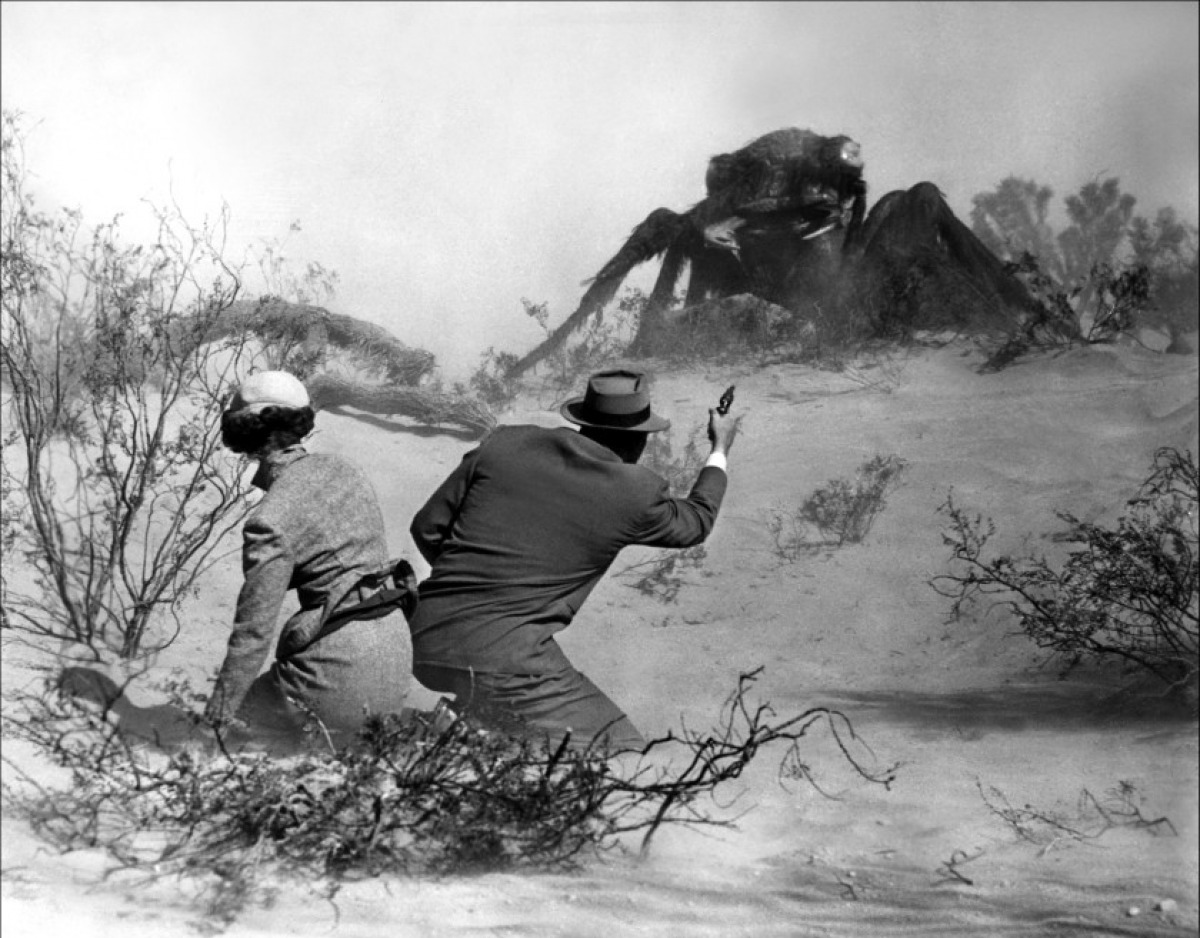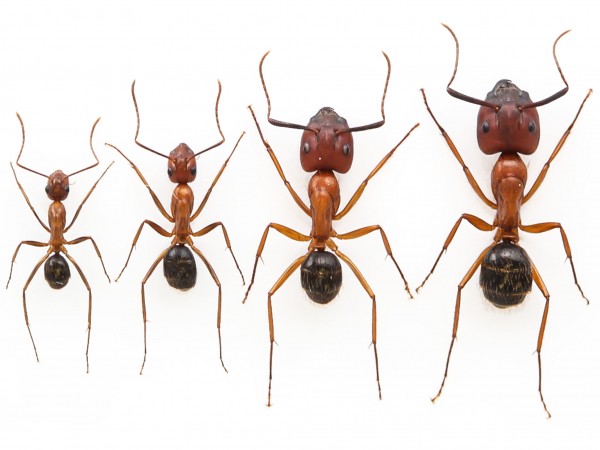Epigenetics of ant size

The term epigenetics refers to heritable changes in gene expression (active vs. inactive genes) that does not involve changes to the underlying DNA sequence. It results in change in phenotype without a change in genotype. An easily comprehensible example are identical twins: since they develop from a single fertilized egg, they have the same genome. However, when they grow they become more and more different and this is due to epigenetic modifications of their genes and regulatory regions. The epigenetic change is based, at least, in three different systems: DNA methylation, histone modification and non-coding RNA associated gene silencing.
Ants are eusocial insects belonging to the order Hymenoptera distributed in around 22,000 species. All ants in a colony arise from a single individual, the queen, therefore the genetic variation among members of the same colony is low. Nevertheless, in a few ant species, colonies include physical castes, workers in distinct size-classes. This is the case in the Florida carpenter ants (Camponotus floridanus) where two groups of workers can be distinguished: Minor workers, which are less than 6 mm long and larger ants or major workers, sometimes called soldiers, which can be more than 10 mm long and they may have disproportionately larger heads and correspondingly stronger mandibles. The differences are not restricted to size but also involve the behavior: minor workers rear the young and forage for food whereas the major workers protect the colony from predators.
Complex quantitative traits, like size and behavior, are a pervasive feature of natural populations. The diversity in these traits is the product of both genetic and environmental factors and epigenetics systems can mediate genome-environment interactions, causing the impressive differences of phenotypes observed in the ant castes.
All holometabolous insects (ants, bees, wasps, beetles, flies…) do not grow as adults, growth occurs only during the larval stages the so called instars. The reason is that the hard and inflexible exoskeleton does not molt and therefore their final sized is determined entirely by the end of larval development just before metamorphosis. Environmental factors such as nutrition levels of proteins, vitamins and minerals as well as social interactions are supposed to influence the final size of the workers.

Sebastian Alvarado and his group from McGill University in Montreal, Canada, suspected1 that the development of one specimen to fit one of the castes was related with DNA methylation. It has been shown in honeybees that gene methylation regulates alternative splicing and can repress gene expression and phenotype in a caste-specific manner.
First of all, the authors determined the size distribution of adult workers. They found that is continuous with two peaks in frequency that represent the two worker castes: minor and mayor workers. The larvae grow in four instars and most of the growth differences in size happened during the 4th (final) instar.
Second, they checked the DNA methylation and they found that 4th instar minor larvae were significantly hypermethylated compared with 4th instar major worker larvae.
Third, they manipulated the levels of global methylation using chemical substances that promote or curb methylation throughout the genome. The result was amazing: the amount of methylation determined the size of the adult ants following a negative correlation, i.e., increased methylation throughout the genome increased the proportion of minor workers, and reduced methylation resulted in more soldiers.
Fourth, they looked for potential targets of DNA methylation using the expression of a panel of growth-controlling genes. They found that Egfr (Epidermal growth factor receptor gene) shows the most dramatic increase in expression within 4th instar minor worker larvae. EGFR (epidermal growth factor receptor) acts as a cell surface receptor that binds specific extracellular protein ligands and, once bound, stimulates phosphorylation and activates downstream pathways, being a presumable player in size differences.
Fifth, they downregulate EGFR signaling during the early 4th instar using a pharmacological inhibitor. They discovered that, relative to controls, this shifts the continuous size distribution by significantly increasing the mean size of adult workers.
Sixth, they analyzed global DNA methylation and Egfr expression finding an inverse relationship: increasing methylation throughout the genome led to reduced methylation of Egfr, resulting in increased EGFR activity, resulting in smaller workers. In contrast, reducing methylation overall caused increased methylation of Egfr and spawned heftier workers. Alvarado and his coworkers consider that both processes may regulate worker size differences by affecting the duration of developmental stages. Increasing development times gives worker larvae more time to grow resulting in larger adult workers, whereas decreasing the duration previous to metamorphoses gives larvae less time to grow, resulting in smaller adult workers. It is possible also that the amount of food or care that an ant larva receives affects the overall amount of methylation in its genome.
Finally, caste determination is a complex process that may require more than just size increase. There are many features other than size, which are not present in minor workers and that may require their own regulatory systems. For a neuroscientist, it will be interesting to see if changes in DNA methylation also alter their behavior, if that is enough and how is this done.
Sometimes the ant colony is compared to a single organism where ants are like cells, being morphological and functional units but lacking much sense by themselves and being impossible, in both cases, to survive independently. Following this parallelism, epigenetic modifications determine both which type of worker an ant will be and which is the final destination (neurons, skin cells, kidney cell, bone cell…) of the differentiation process for a cell in a multicellular organism.
References
- Alvarado S, Rajakumar R, Abouheif E, Szyf M (2015) Epigenetic variation in the Egfr gene generates quantitative variation in a complex trait in ants. Nat Commun. 2015 Mar 11;6:6513. doi: 10.1038/ncomms7513. ↩
2 comments
[…] Epigenetics of ant size […]
[…] epigenética es un término que cada vez suena más y con razón. José Ramón Alonso presenta en Epigenetics of ant size un fantástico ejemplo de la epigenética en acción en una población con mínimas variaciones […]